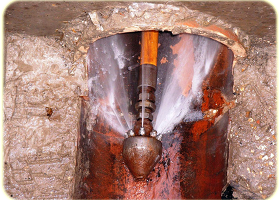General under the Corporations, as with the former removal provisions under the Corporations Law before the clear reforms in different statutory provisions apply depending on whether it is a proprietary company or public company wishing to remove a director from managing the corporation. The philosophy behind these statutory procedures is that of shareholder control–that is, members of the company should have the power to remove directors so that directors do not become entrenched in their positions. Shareholders must have ultimate control over the composition of the board so that the separation of ownership and control within the company is effective Proprietary companies before the clear reforms, there was no statutory removal provision applying to proprietary companies, and therefore proprietary companies needed to individualize removal procedures in the company’s constitution, usually by adopting of the former Corporations Law which contained a general removal provision applicable to both public and proprietary companies.
Removal provisions under the corporations
Office Removal Companies London Compensation or damages after statutory removal another question which has caused some uncertainty is whether directors of public companies who are removed following the procedures outlined in the Corporations Act are still entitled to compensation or damages due to being removed. Law, and is not dependent upon any statutory provision. As was noted in the earlier article, if there is not a statutory provision providing for compensation or damages upon removal, a director’s right to compensation or damages should be determined in terms of general law principles anyway. Although the statutory removal provision was previously only of decorative nature, this is no longer the case. Based on the authors’ view that is now the only way in which directors of public companies may be removed, this statutory removal provision is now an essential part of the Australian corporations’ law. On our interpretation of the current statutory removal provision, not only provides the only way in which directors of public companies in Australia could be removed, but it also contains several provisions to ensure procedural fairness. The special notice requirement, the director’s right to put his or her case to the members, and the possibility of circulation of the director’s written statement to the members are examples of this one.

Compensation or damages after statutory removal
The removal of directors of proprietary companies can, however, still be troublesome. In cases where a proprietary company has adopted a constitution and a removal power does not form part of the constitution, these directors will be virtually unresolvable. This was the case before a statutory removal provision formed part of the law in some other jurisdictions. Whether this is desirable is open for debate. The only justification that we could find for a different statutory removal provision for public and proprietary companies is that in the case of proprietary companies, there should be more freedom for the shareholders to arrange their internal matters according to their desire. Australia is, however, still the only common law jurisdiction that distinguishes between the removal of directors in public and proprietary companies. Based on our interpretation that now provides the only way in which directors of public companies can be removed, the removal of directors of public companies in Australia will now also differ from all other common law jurisdictions where proprietary and public companies are allowed considerable freedom to individualize their removal procedure through provisions in the articles of association or constitution.





